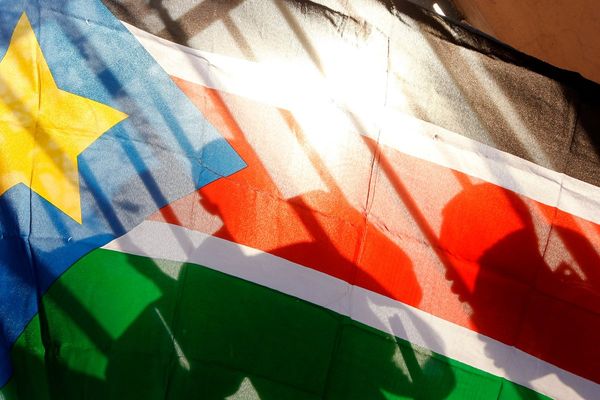
While a new year starts a new performance clock for CEOs, four heads of iconic U.S. enterprises face turbulent, inherited challenges with elevated investor anxiety. These four Fortune 500 companies—Warner Bros. Discovery, Boeing, Starbucks, and Nike—are led by knowledgeable, experienced industry veterans whose impressive backgrounds led to soaring expectations that ironically shortened customary performance “grace periods” of a taking-charge process.
All four of these U.S. businesses are in well-known markets with identifiable household names globally. Yet the brand legacies alone do not provide lifejackets for survival. While all four are adroit users of leading-edge technologies, the resilience of these business is not dependent on AI, the cloud, cryptocurrency, MRNA, GLP-1 drugs, or the commercialization of other scientific breakthroughs. They do require a compelling, comprehensive strategic vision with confident execution and credible communication to all key stakeholders. Two firms, Warner Bros. Discovery and Boeing, appear lost at sea, while Starbucks and Nike seem to be piloting to safety.
Warner Bros. Discovery: Another horror series
Warner Bros. Discovery has produced many great Stephen King horror movies and sequels, but the studios’ parent company has lived its own real-life horror shows time and again. Time Warner CEO Jerry Levin eventually apologized for the fiasco of his merger with AOL in January 2000, widely derived as the worst corporate merger in history, leading to over $160 billion in write-offs.
Remarkably, lightning struck again 22 years later when AT&T’s ailed merger with Time Warner squandered over $100 billion. While this merger was very lucrative for Time Warner shareholders, four years after that deal closed, thanks to the creativity-crushing AT&T leadership, Time Warner assets were sold to Discovery at a $47 billion loss for AT&T shareholders. Just six months after the April 2022 close of the latest deal, Warner Bros. Discovery had lost $23 billion in market capitalization.
Now, three years later, Warner Bros. Discovery is living a new nightmare. Like many legacy media companies, it continues to balance the struggles of “cord cutting”—those few remaining households that are now canceling subscriptions to their cable television service in favor of streaming services—and the formation of a profitable streaming business that can compete with Netflix and Disney. However, the problem is particularly acute for CEO David Zaslav, with the stock down 70% since the merger between WarnerMedia and Discovery was announced in 2021.
The media company had a difficult summer. It took a $9 billion impairment charge in June 2024 to reflect the revised market value of what was an overvalued bundle of cable networks. The bad news was quickly compounded in July when the NBA announced a decision to award its coveted media rights deal to Comcast, Disney, and Amazon, snubbing their broadcast partner of 40 years. In the following month, a federal judge then blocked the launch of a sports streaming partnership between Warner Bros. Discovery, Disney, and Fox Corporation. That partnership was recently discontinued due to an “ever-changing marketplace” according to a joint statement from the group.
Aside from the streaming industry challenges of password sharing, customer churn, and content creation, Warner Bros. Discovery still must service a heavy debt burden of $40 billion from the merger. Shrinking cash flows from a dwindling legacy cable business leaves little room for misstep, let alone the necessary super-sized investments into content creation for the streaming platform, Max.
Zaslav, the industry veteran, has remained steadfast, however. Warner Bros. Discovery recorded its first quarterly profit since the merger after higher-than-expected subscriber growth in Max. Zaslav has used competitive partnerships and product offerings to increase streaming membership.
Renewed cable distribution agreements were reached early and relatively smoothly with Comcast and Charter, avoiding blackouts that have plagued other cable network owners. The agreements provided Zaslav an opportunity to introduce cable subscribers to Max and Discovery+ through free access to the ad-supported versions. Warner Bros. Discovery also reached a deal with Disney to create an industry-leading bundle including Disney+, Hulu, and Max. And despite the crushing loss of NBA rights, professional wrestling is now available to Max subscribers, a helpful but lackluster consolation prize.
Most intriguing, though, is the recent announcement that Warner Bros. Discovery will be reorganized into two divisions—Global Linear Networks and Streaming and Studios—to enhance strategic flexibility in preparation for a sale or spin-off of the legacy cable business. The move positions the Streaming and Studios division to partake in the expected streaming consolidation. Competition for streaming and cable networks will be fierce with a recapitalized Paramount, reorganized Liberty Media, and restructured Comcast/NBC Universal as well as other media heavyweights such as Netflix and Disney.
2025 will be a pivotal year for Zaslav. The good news is the worst has likely passed. Warner Bros. Discovery stock is up over 40% since the summertime doldrums. While all eyes will be on potential joint ventures and M&A under a more business-friendly Trump administration, particularly with a reorganized Warner Bros. Discovery, whether the company can generate sufficient cash flows to plow into content development and to service debt remains a major question. Not to mention whether that new content will satisfy existing subscribers and entice new ones and be done profitably.
Boeing: Struggling for cruising altitude
Ever since the tragic 737 MAX accidents in 2018 and 2019 killed 349 passengers, the issues facing Boeing have been well chronicled. An extensive investigation by the FAA, a plea deal with the Justice Department, production lines halted, and frequent meetings to repair relationships with customers, suppliers, and politicians soon became additional priorities for Boeing leadership to manage.
Then, an Alaska Air door blowout at the start of 2024 brought into question all the progress achieved and eventually brought the downfall of the CEO who was supposed to fix the world’s largest aerospace company, David Calhoun.
Tapped to finish Calhoun’s strenuous task was Kelly Ortberg, an industry veteran who headed the company—Collins Aerospace—that provided the MCAS autopilot system software found partly to blame for the 2018 and 2019 crashes. However, less than two months into Ortberg’s tenure, Boeing workers added to their new leader’s to-do list when they organized a labor strike that would halt production for more than seven weeks and drain the company of cash, forcing the plane maker to scramble for funds in a bid to preserve its “investment grade” bond rating.
Strike resolved and capital secured, Ortberg has now set his sights on cautiously and safely ramping production back up, including for the still highly sought after 737 MAX, which is subject to an FAA production “cap” of 38 planes per month. While the cap is important to ensure secure production, Boeing faces a growing backlog of more than 4,200 orders for the 737 MAX alone in addition to an impatient contingent of airlines now questioning their preference for the American-made aircraft.
With 2024 output expected to be less than half of the peak reached in 2018, production will therefore be in focus for Ortberg as he kicks off the year. The new CEO must execute on an ambitious agenda to carefully increase productivity. Ortberg recognizes the path to success starts from the inside, recently telling employees in November that the company must establish a culture of collaboration and responsibility, streamline operations, and cut wasteful spending. A potential sale of the troubled unit managing the Starliner space vehicle—which has embarrassingly left two astronauts stranded on the International Space Station—and services supporting NASA is also under consideration in an effort to home in Boeing’s focus.
Glimmers of hope do seem to be appearing. After a December inspection, FAA Administrator Mike Whitaker said, “Boeing has made progress executing its comprehensive [safety action] plan.” More recently, after a 30% down year in the stock—and 50% lower since the 2018 crash—Barclays upgraded the aerospace company to overweight, the first time in more than five years, citing a strengthened balance sheet after the labor strike and a belief in the new leadership’s early efforts in the turnaround. Of course, Boeing does benefit from being one of two players in a virtual global duopoly with its peer Airbus. Nevertheless, the world needs Boeing to return its former position of supremacy. 2025 will be the year that sets the trajectory of Ortberg’s leadership.
Starbucks: Leadership’s caffeine kicking in already
Turning to those who have established a clearer path to success, Starbucks has quite possibly found in its new CEO, Brian Niccol, a “messiah.” As we wrote when his appointment was announced in August, Niccol stood to inherit a Starbucks mired in operational challenges causing unbearably long wait times. Many customers felt the coffee chain had become just that—too much of a coffee chain rather than the community coffeehouse that Starbucks founder Howard Schultz had established. If customers were not perturbed enough, overpriced, out-of-touch new product launches strangely supplemented by promotions pushed most of the rest over the edge.
Internally, Starbucks was also fractured. A slow-moving turnaround and haphazard international expansion were frustrating many inside and outside of the company including the retired but widely respected founder and Chairman Emeritus, Schultz. The frustration was felt all the way down to baristas who were overwhelmed by a complicated, ever-changing menu in addition to a new (for Starbucks at least) mobile orders platform that was poorly integrated into the existing coffeemaking process. Tense relations with unionized stores continued to plague leadership and draw unwanted media attention.
The outcome was disconcerting for the once hailed coffee company and harshly materialized in earnings. A global consumer slowdown, notably in China, did depress international sales, but even a consumer driven by “American exceptionalism” could not spare the struggling chain’s domestic business, which saw three straight quarters of same-store sales declines in the U.S. before Niccol arrived.
When Niccol did arrive from Chipotle, many industry experts had lofty expectations for the leader who had overseen a successful turnaround streamlining operations, improving food quality, safety, and service, and delivering new delicious menu items. Niccol swiftly drafted a four-pronged plan to shore up U.S. operations that effectively expedites drink delivery time, simplifies the menu, recreates a more premium brand, and enhances the in-store experience.
Niccol is also evaluating options for competing in China, which offers a huge consumer base but faces strong opposition from Chinese companies, such as Luckin Coffee. And despite Starbucks often setting the industry standard for wages and benefits, unionized members have continued to demand better wages and benefits, most recently having more than 170 stores go on strike on Christmas Eve. (For context, Starbucks has nearly 10,000 company-owned stores in the U.S., approximately 500 of which are unionized.) Nevertheless, Niccol has committed to constructively and fairly engaging with the union representatives.
On the news of Niccol’s hiring, Starbucks stock jumped more than 20%, erasing nearly all losses and equating to a more than $20 billion gain in the market cap. Niccol has been able to maintain those gains with his current plans, and while it is too soon to search for measurable results, investors and coffee-lovers anxiously await the expected progress in wait times, in-store experience, and product quality. A miracle would be need for many qualified CEOs to resolve the challenges facing Starbucks, but Niccol is capable of delivering it back to the promised land.
Nike: Sprinting to victory
Like Starbucks, Nike has swiftly and clearly developed a strategy to stem the damage to the brand and begin its return to the top. Leading the turnaround is Elliott Hill, who was announced as CEO in September to replace John Donahoe. Donahoe left Hill a company in the middle of flailing transformation that had caused the storied sneaker company to lose its way.
Longtime commercial ties to retailers, such as Foot Locker and DSW, were cut in an attempt to sell more product directly to consumers, only to be sheepishly recultivated after the sales scheme failed. The revered brand was diminished after new sneakers failed to impress and supposed “limited edition” sneakers were not so limited. Competition took notice and ate away at Nike’s dominant position, particularly in running, where new names like On and Hoka as well as old ones like New Balance and Asics quickly enamored runners with superior shoes.
The difficulties had taken their toll not only on employee morale, with one employee saying “I’ve never seen employee morale lower,” but also on financial performance with the rate of sales growth for fiscal year 2024 as one of the worst in decades. In the quarter ending August 2024, quarterly revenue declined by 10%, the worst decline since the turmoil of the pandemic in 2020. The announcement of Donahoe stepping down and Hill stepping up came the next month.
Hill has exited retirement bringing his 30-plus years of experience at Nike with him, including a turnaround of the North America business in 2010. That experience has already become apparent as the executive embarked on a 60-day sprint to start his tenure, meeting with key constituencies from retail partners, distributors, and manufacturers to heads of major sports leagues and star athletes. Hill also turned inward, recognizing a clear need to reignite the culture of innovation among employees.
But his primary focus remains on the product, with “sports as [the] North Star.” Hill has laid out short-term plans to reduce the use of promotions and discounts, deplete inventory in underperforming products, rebuild the strength of key shoe franchises, meet consumers in their hometowns, and invest heavily in target sports. Indeed, new product launches have already been identified, as have opportunities for innovation among existing shoe lines, by Hill’s blitzkrieg strategy.
While the detailed planning from Hill and his executive team have been well received, the market understandably wants results after seeing the stock move down by 30% in 2024. Precisely how the new and renewed products are received by the public will be closely followed. There have been signs of improvement already, however. The return of a venerated Nike insider to lead the company provided a boost to employee morale. Similarly, some retailers have expressed a new sense of confidence in the shoe company after hearing of Hill’s appointment and vision. Even the typically skeptical Wall Street analysts are giving Hill a few quarters to allow his fresh strategy to take effect.
Thomas Aquinas once advised, “If the highest aim of the captain of a ship were to preserve his ship, he would keep it in port forever.” These CEOs, like ship captains, were hired to navigate through choppy seas, and each faces industry-specific headwinds. Their investors, like ship passengers, are looking for when to bail out with their life jackets. The leaders of Warner Bros. Discovery and Boeing seem to be continually surprised by uncharted rocks and stormy waters. The leaders of Starbucks and Nike thrive on such turbulence and have reassuring histories to know how to stay afloat.
Jeffrey Sonnenfeld is the Lester Crown Professor of Leadership Studies at the Yale School of Management and founder and president of the Yale Chief Executive Leadership Institute—the world’s first school for incumbent CEOs. Having published seven books and over 120 scholarly articles, he won the Academy of Management's 2023 Distinguished Scholar-Practitioner Award. Stephen Henriques is a senior research fellow at the Yale Chief Executive Leadership Institute and a former McKinsey & Co. consultant.
The opinions expressed in Fortune.com commentary pieces are solely the views of their authors and do not necessarily reflect the opinions and beliefs of Fortune.







